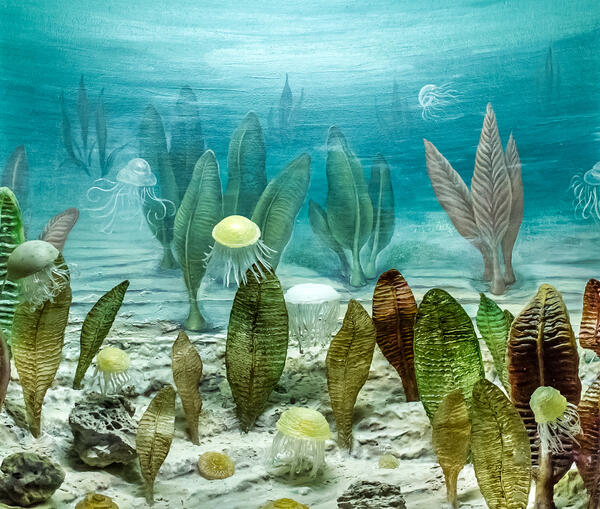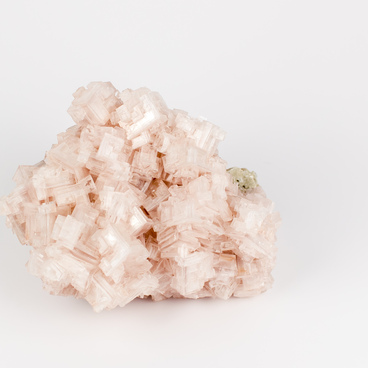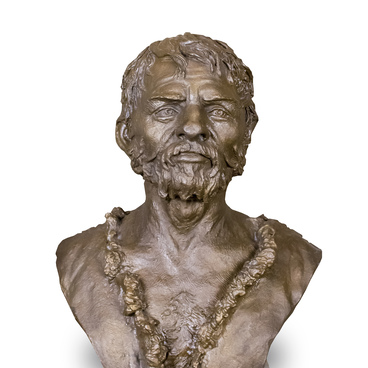The Vendian period in the history of the Earth began about 630 million years ago. This name was given by Boris Sokolov, USSR geologist, in honor of the Slavic tribe of the Wends, who lived to the south from the Baltic Sea coast. But this name did not become generally accepted in the world and is now found only in the Russian scientific literature. The International Union of Geological Sciences approved another name — the Ediacaran period, in honor of the Ediacaran Hills in Australia.
It was during the Vendian period when the first multicellular organisms appeared on the Earth. They did not look like any of the modern living creatures. For a long time, scientists could not determine exactly whether they were plants or animals, so they began to call them Vendobionts. They resembled fern leaves, feathers, curved ribbons, disks. The researchers believe that they did not have a complex internal structure, had thin outer coverings, and probably received nutrients directly through them, the entire surface of the body. In total, now about a hundred species of Vendobionts are discovered. The appearance of some of them is recreated in the diorama ‘The Vendian Sea’, which is displayed in the collection of the Natural History Museum of Tatarstan.
Vendobionts could not yet live on land. By that time, the Earth’s atmosphere had already become dense, it contained oxygen necessary for breathing, but the ozone layer, which would protect against dangerous radiation, had not yet formed. Only water could protect from it, but the depths of the seas and oceans were also not suitable for these creatures, the water there was too cold, and there was little food. The best option was coastal shallow water. Some organisms were fixed vertically in the bottom soil, like plants. Others were flat and lay on the bottom. At that time, there were probably cyanobacteria in the shallow water, which these creatures fed on.
Vendobionts did not have a skeleton, so paleontologists find only prints in the rock, which was previously sea silt. Paleontologists find only prints in the rock, which was previously sea silt. However, they did not pay attention to them for a long time and took them for the natural pattern of stones. These prints were first found in Australia, in the Ediacaran Hills. Then they began to be found in China, Siberia, South Africa. The largest cluster of Vendobionts was discovered in 1977 in the Arkhangelsk region, on the shore of the White Sea.
It was during the Vendian period when the first multicellular organisms appeared on the Earth. They did not look like any of the modern living creatures. For a long time, scientists could not determine exactly whether they were plants or animals, so they began to call them Vendobionts. They resembled fern leaves, feathers, curved ribbons, disks. The researchers believe that they did not have a complex internal structure, had thin outer coverings, and probably received nutrients directly through them, the entire surface of the body. In total, now about a hundred species of Vendobionts are discovered. The appearance of some of them is recreated in the diorama ‘The Vendian Sea’, which is displayed in the collection of the Natural History Museum of Tatarstan.
Vendobionts could not yet live on land. By that time, the Earth’s atmosphere had already become dense, it contained oxygen necessary for breathing, but the ozone layer, which would protect against dangerous radiation, had not yet formed. Only water could protect from it, but the depths of the seas and oceans were also not suitable for these creatures, the water there was too cold, and there was little food. The best option was coastal shallow water. Some organisms were fixed vertically in the bottom soil, like plants. Others were flat and lay on the bottom. At that time, there were probably cyanobacteria in the shallow water, which these creatures fed on.
Vendobionts did not have a skeleton, so paleontologists find only prints in the rock, which was previously sea silt. Paleontologists find only prints in the rock, which was previously sea silt. However, they did not pay attention to them for a long time and took them for the natural pattern of stones. These prints were first found in Australia, in the Ediacaran Hills. Then they began to be found in China, Siberia, South Africa. The largest cluster of Vendobionts was discovered in 1977 in the Arkhangelsk region, on the shore of the White Sea.



